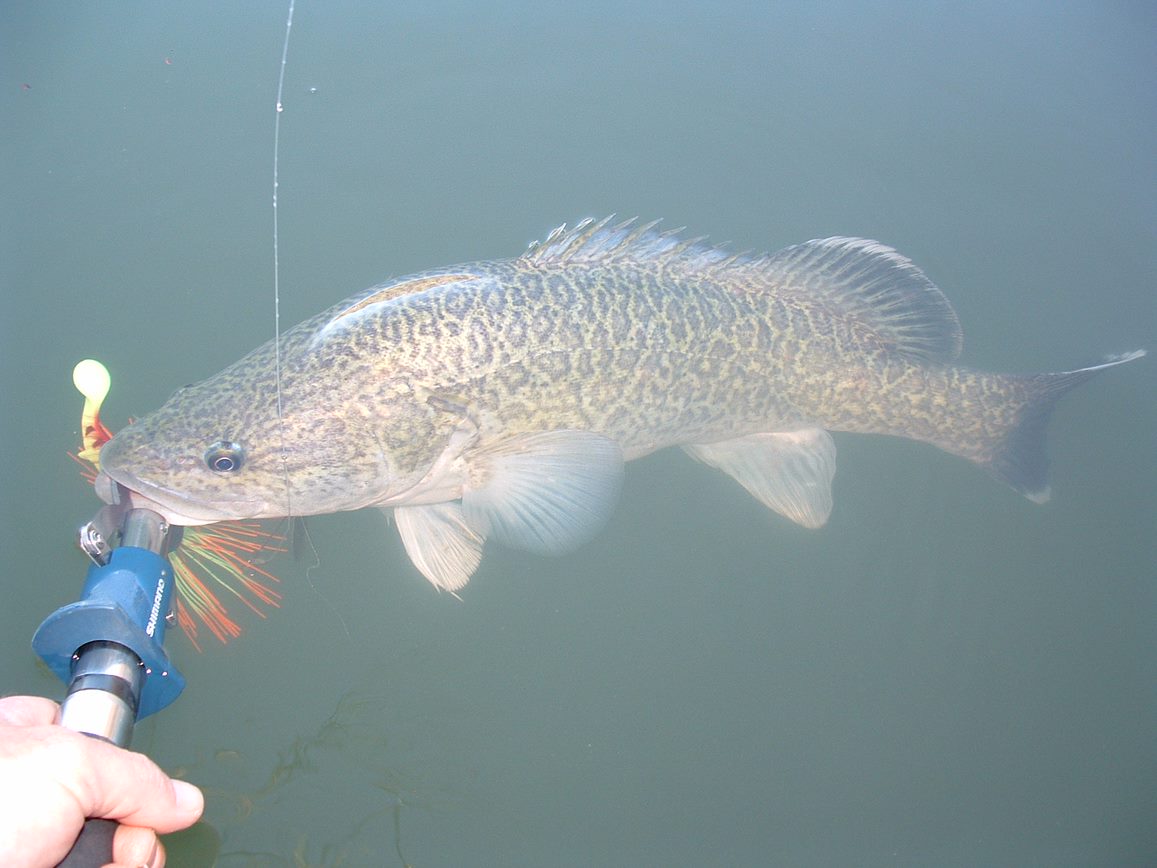How to catch Murray cod
Lake fishing
Murray cod fishing can be enjoyed in different ways, including trolling, lure casting, and bait fishing. Lake fishing is a great way to target cod, with clean water bringing out the best colors and patterns of the fish. Shoreline fishing can be surprisingly effective, especially during low light periods. Persistence is key as Murray cod can be moody and may refuse bait or lures for hours before suddenly switching on.
Trolling
Trolling is one of the most reliable ways to catch big cod. Large deep diving lures, swimbaits, and even surface lures can be used while trolling. Trollers usually pull two lures behind their boat, often in deep water between 4 to 10 metres. While this is a great way to find hungry cod, retrieving lures when snagged can be challenging. Experienced trollers know how to navigate the shoreline to stay in the strike zone without getting snagged. Heavy baitcaster or spin outfits are recommended, around 6 feet in length with 50-pound braid and a 60lb monofilament or fluorocarbon leader of about 5ft.
Lure casters
Boat-based lure casters are often the most serious cod fishers, putting in significant hours and hundreds of casts at likely structures such as standing and fallen timber, weed edges, and banks. Lure casters usually concentrate in waters less than six metres and focus on the depth between that and the bank edge. Large spinnerbaits, bibbed lures, swimbaits, and surface lures are effective depending on the time of day and water clarity. Longer rods are used to get bigger casts, with 7-8ft models being ideal. A baitcaster reel with 50lb braided line and 5ft of 40 to 60lb leader is recommended.
Bait
Bait fishing is another effective way to target Murray cod in lakes. Boat fishers often tie up to a snag or standing timber and lower baits before waiting for a bite. Traditional baits such as bardi grubs, yabbies, shrimp, or scrub worms are still popular, but non-natural baits like raw chicken pieces and cheese are also being used. The running sinker rig is ever popular, and a circle hook is recommended to prevent gut hooking and enable released fish to remain healthy. The same gear recommended for trolling is also great for bait fishers, who should move every hour or so to try and intersect with active fish.

Shore-based fishers
Shore-based lure casters typically target visible structures from the shore and retrieve their lures slowly towards them. The exhilarating aspect of this style of fishing is that one never knows when the next cast will yield a big catch. When retrieving lures back towards the bank, the heart-pumping moment of a cod strike can occur in the last few metres of the retrieve. While the lure types used by boat fishers are suitable for shore-based fishing, the nature of cod fishing around structure may result in some losses. Using smaller spinnerbaits that can be bounced over structures or bibbed diving lures that float up and over snags when paused can minimise such losses. Surface lures are also effective, as they can glide over any subsurface obstacles. A sizable cod caught from the shore on a lure is a significant trophy and a great reward for the effort.
For those who prefer bank fishing with bait, targeting cod in lakes is a relaxing pastime. Similar to lure fishing, setting up adjacent to snags and casting out into a few metres of water is recommended. Cod usually patrol the edges when they are active, offering excellent chances for success. However, it is important to anchor the rod as a decent-sized cod can easily pull it into the water. A 7-ft medium-heavy spin rod with 50lb braid, 5ft of 60lb leader and circle hooks matched to the bait size are ideal for this type of fishing. Common bait options include bardi grubs, yabbies, shrimp, chicken or cheese.
